ANSWERS TO INITIAL QUESTIONS ON THE COMMUNIST MANIFESTO
The following is the text of an initial interview conducted by the National Democratic Online School with Jose Maria Sison, Emeritus Chairperson of the International League of Peoples’ Struggle, on one of Marx’s and Engels’ most popular work The Communist Manifesto. The interview was posted online and further discussed by Prof. Sison on 31 May 2020, as Episode 3 of the “Marx and Labour Serye [Series] with Tito Jo”. The Marx and Labour Series, organized by Anakbayan Europa, is conducted as an online event broadcast and recorded on Facebook Live.
ANSWERS TO INITIAL QUESTIONS ON THE COMMUNIST MANIFESTO
At the ND Online Forum Series on Marx and Labor with Tito Jo
By Jose Maria Sison
Chairperson Emeritus, International League of Peoples’ Struggle
1.What is the significance of the Communist Manifesto in 1848?
Jose Maria Sison (JMS): The Communist Manifesto proclaimed the principles and the general program of action of the Communist League and communists in general. It was a major ideological consolidation of the revolutionary movement of workers under the leadership of communists. It contains four chapters that we can sum up very briefly.
The first chapter asserts that the history of all hitherto existing societies is a history of class struggle and describes the eventual emergence of the bourgeoisie and the proletariat, their respective characters as classes and the growing class struggle between them. The second chapter relates the communists to the proletariat and puts forward 10 measures for the purpose of social transformation.
The measures are the following: the abolition of private ownership of land and application of all rents to public purposes; the institution of a heavy progressive or graduated income tax; the abolition of all inheritance rights; the confiscation of emigrants’ and rebels’ property, making all people liable to labor; state centralization of banking and credit; state centralization of communication and transportation; abolition of the private ownership of factories; the gradual combination of agriculture and manufacturing industries; the elimination of the distinctions between town and country; and the establishment of free education for children and abolition of child labor in factories.
The third chapter presents the reactionary, conservative or bourgeois and critical-utopian socialist currents in contrast to the scientific socialism proposed by the communists. The third chapter urges the communists to remain firm in their revolutionary position and at the same time encourages them to cooperate with other parties in order to generate the conditions for revolutionary change.
The Communist Manifesto reflected the conditions when the working class was building trade unions and was in transition to the building of the communist party. It also coincided with the workers’ uprisings in Europe in 1848. But it did not yet guide them. It would be after the formation of the International Workingmen’s Association and more so after the Paris Commune of 1871 that the Communist Manifesto became well known in the working class movement.
By the last decade of the 19th century, Marxism became dominant in the working class movement in Europe. And the Communist Manifesto became basic reading fare in the Second International. After the revisionist betrayal of the socialist cause, Leninism arose to develop further Marxist theory and practice in the era of modern imperialism and proletarian revolution.
2. The modern bourgeoisie is itself the product of a long course of development, of a series of revolutions in the modes of production and of exchange. Can you elaborate on this historical development that led to the rise of the bourgeoisie?
JMS: The bourgeoisie came from the womb of feudalism. It came from the differentiation between town and countryside and between the guild masters and the artisans in the guilds based in the towns. The manors of the feudal aristocracy were in the countryside while the germinal bourgeoisie was based in the towns. Eventually, certain towns grew to become city states in conjunction with the rise of manufacturing of the pre-industrial type of large scale machine production.
While the feudal system persisted, the bourgeois or capitalist mode of production developed in three stages: handicrafts, manufacturing and industrial machine production. In the handicraft stage of capitalist development, an artisan used hand tools to make an entire product in a certain craft. But in the manufacturing stage, production was made more efficient through the division of labor among manual workers, with each worker working faster by doing only one part of the product day in and day out.
Manufacturing in the Italian city states was highly developed by the 13th century. And by the 16th century, The Netherlands became the first country to have manufacturing as the main factor for national economic development. In the second half of the 18th century, industrial machine production emerged in France, with the use of steam power and machines.
Large-scale machine production of commodities became most developed in England in the 19th century in the time of Marx. Together with the Enlightenment, the advent of industrial machine production in the second half of the 18th century promoted the political rise of the bourgeoisie and gave it the impetus to aim and fight for a liberal democratic revolution against the ancien regime of the absolute monarchy and feudal aristocracy.
3. What is the bourgeoisie and what is the proletariat? Is there a difference between the proletariat and the working class?
JMS: The bourgeoisie is the class that owns the means of production in the capitalist system. The proletariat does not own such property and has to sell its labor power to the bourgeoisie in order to obtain the wages with which to buy its means of subsistence. Proletariat and working class are synonymous terms. They do not differ in meaning. Laboring class and labor are also synonymous terms.
4. The lower middle class, the small manufacturer, the shopkeeper, the artisan, the peasant, all these have contradictions against the bourgeoisie. However, out of all the classes, the proletariat alone is the real revolutionary class. Why is this?
JMS: The industrial proletariat is the most revolutionary class in any society dominated by the bourgeoisie because it is the most productive and progressive class. In an industrial capitalist society, it is the majority class. By its labor power, it creates the commodities that the bourgeoisie appropriates. In the process, it is the victim of exploitation and injustice and has the motivation and capacity to wage revolution in order to emancipate itself from bourgeois rule and to establish socialism.
The lower middle class, the small manufacturer, the shopkeeper, the artisan, the peasant and others have contradictions with the bourgeoisie but they also cooperate with it because by themselves they cannot fight it. But as the crisis worsens and they suffer more than ever, they can be persuaded to oppose the big bourgeoisie and join the revolutionary movement as allies of the proletariat. They have nonrevolutionary motives of self-interest but they are moved by the circumstances to oppose the biggest exploiters and oppressors.
5. According to Marx, the theory of the Communists may be summed up in the single sentence: Abolition of private property. Can you elaborate on this? What does he mean by ‘private property’?
JMS: By private property to be abolished, Marx means private ownership of the means of production which is the basis of the class rule of the bourgeoisie. This has to be abolished in order to stop the bourgeoisie from using it to exploit the proletariat and also in order to emancipate the proletariat. The proletariat must wage class struggle against the bourgeoisie in order to overthrow its class dictatorship and to establish a new social order.
6. How will this social order look like? Can you describe how life is in a communist society?
JMS: Before a classless communist society can emerge, the socialist society must be established and developed first. There will be common or public ownership of the means of production. The proletariat and the rest of the people need to develop the economy, their political power, science and technology and culture in general, and defend society against subversion by the domestic bourgeoisie or aggression by the imperialist bourgeoisie. The anti-imperialist struggles and the world proletarian revolution must defeat imperialism in order to make sure that communism can be established.
7. Communism definitely requires very radical changes in order to be achieved. It will not be in our generation’s lifetime. When the proletariat rises to the position of the ruling class, what measures should be taken up first to pave the way to the road to communism?
JMS: Indeed, there will have to be fundamental or radical changes. These are necessary to realize and consolidate socialism as the precondition to communism. The socialist state or the class dictatorship of the proletariat will wither away as imperialism and modern revisionism cease to exist as a threat and obstacle to the transition of socialism to communism.
8. Will it be possible for the socialist revolution to take place in one country alone? In which countries will it develop more rapidly?
JMS: It was demonstrated by Lenin and Stalin that it is possible for a socialist revolution to win and build socialism in one country. The industrial capitalist countries provide the best possible economic and material conditions for building socialism. But the bourgeoisie will use its state power and every violent means to stop the proletariat from establishing socialism. So, where the economic and material conditions are best for socialism, the political conditions are worst for the effort to establish socialism.
9. What will be the influence of the communist society on the family?
JMS: The family will be a highly important and necessary biological, social, economic, political, cultural and ethical unit. But it will not be motivated by the capitalist rule of self-interest or greed and the desire to exploit others or submit itself to exploitation and oppression by a few families constituting the bourgeoisie.
10. Do communists differ from socialists? How? And what kind of relationship can they have with each other?
JMS: Communists are also called scientific socialists and Marxist-Leninist-Maoists to differentiate themselves from those who call themselves socialists but do not qualify as scientific socialists. The Communist Manifesto explains the various currents of nonscientific socialism that run counter to or are below the revolutionary standard of scientific socialism. I have earlier mentioned the reactionary socialists, conservative or bourgeois socialists and the critical-utopian socialists and communists.
11. What is the significance of the Communist Manifesto today?
JMS: The Communist Manifesto is today significant and relevant to the situation in the world and in various countries. The epochal struggle between the bourgeoisie and the proletariat continues. The fundamental propositions and principles put forward by the Communist Manifesto remain valid even as there have been major developments since the time of Marx.
Such developments include free competition capitalism developing into monopoly capitalism, the era of imperialism and proletarian revolution, inter-imperialist wars, the rise of socialist societies and national liberation movements, the counterrevolution by imperialism and modern revisionism to destroy socialist societies from within, and the current worsening crisis of the world capitalist system and the resurgence of anti-imperialist struggles and the world proletarian revolution.
Despite the advances of Marxist-Leninist theory and practice and the further developments in class struggle, it is enlightening and useful to know the background and circumstances of the class struggle between the bourgeoisie and the proletariat in the time of Marx and Engels, the relationship of the communists with the proletariat, the various types of socialist and communist literature and the position of the communists in relation to various opposition parties. The Communist Manifesto provides us with a comprehensive and profound view of the course of the world capitalist system and the world proletarian revolution since the time of Marx.###
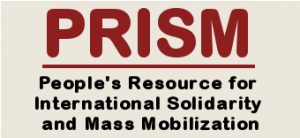
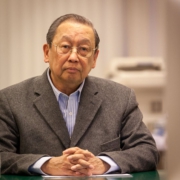
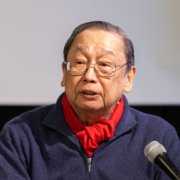
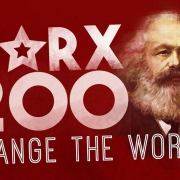
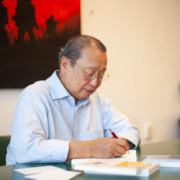


Leave a Reply
Want to join the discussion?Feel free to contribute!